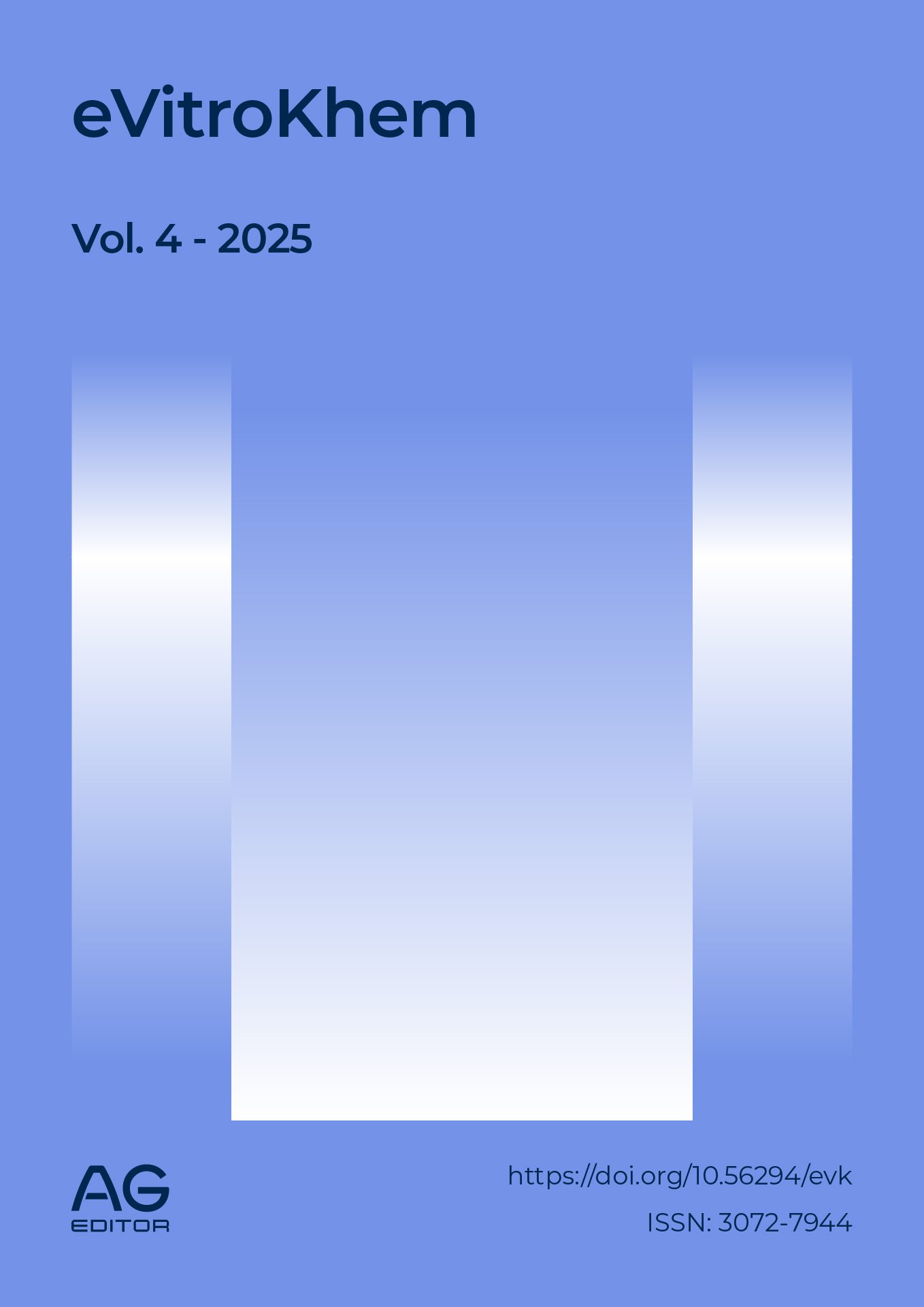Medical Applications and Challenges of Cell Culture Systems
DOI:
https://doi.org/10.56294/evk2025241Keywords:
2D cell culture, 3D cell culture, Regenerative medicine, Drug screeningAbstract
Introduction: cell culture systems allow investigation of physiological, pathological, and pharmacological processes under controlled conditions, tracing back to techniques developed since the early 20th century and enhanced by the discovery of induced pluripotent stem cells in 2006.
Methods: a total of 16 articles in Spanish and English were retrieved from Scopus, Science, and Springer using the keywords “2D cell culture,” “3D cell culture,” “regenerative medicine,” and “drug screening,” with more than 60 % published in the last five years.
Results: two-dimensional cultures are characterized by simplicity, low cost, and scalability in cytotoxicity assays and drug screening, although they exhibit low biological fidelity. Three-dimensional systems better reproduce tissue architecture, generate nutrient and oxygen gradients, and promote more physiological gene expression profiles, making them suitable for tissue engineering, organoid development, and regenerative medicine. Identified applications include monoclonal antibody production, vaccines, cell therapies, and viral diagnostics. However, technical complexity, matrix standardization, and reproducibility remain limiting factors.
Conclusions: cell culture techniques enable in vitro study of cellular physiology and pathology. Two-dimensional monolayers and three-dimensional constructs offer distinct advantages and limitations. Their applications include drug screening, regenerative medicine, vaccine production, and diagnostics.
References
1. 1. Menon D. Cell culture technology advances and aplications. International Research Journal 2023;8:e4566. https://doi.org/10.14303/irjbcs.2023.50.
2. Segeritz C-P, Vallier L. Chapter 9 - Cell Culture: Growing Cells as Model Systems In Vitro. In: Jalali M, Saldanha FYL, Jalali M, editors. Basic Science Methods for Clinical Researchers, Boston: Academic Press; 2017, p. 151–72. https://doi.org/10.1016/B978-0-12-803077-6.00009-6. DOI: https://doi.org/10.1016/B978-0-12-803077-6.00009-6
3. Hudu SA, Alshrari AS, Syahida A, Sekawi Z. Cell Culture, Technology: Enhancing the Culture of Diagnosing Human Diseases. J Clin Diagn Res 2016;10:DE01-05. https://doi.org/10.7860/JCDR/2016/15837.7460. DOI: https://doi.org/10.7860/JCDR/2016/15837.7460
4. Huang X, Huang Z, Gao W, Gao W, He R, Li Y, et al. Current Advances in 3D Dynamic Cell Culture Systems. Gels 2022;8. https://doi.org/10.3390/gels8120829. DOI: https://doi.org/10.3390/gels8120829
5. Górska A, Trubalski M, Borowski B, Brachet A, Szymańczyk S, Markiewicz R. Navigating stem cell culture: insights, techniques, challenges, and prospects. Frontiers in Cell and Developmental Biology 2024;Volume 12-2024. DOI: https://doi.org/10.3389/fcell.2024.1435461
6. Sebastian S. Implementing robotics and artificial intelligence. eLife 2022;11:e80609. https://doi.org/10.7554/eLife.80609. DOI: https://doi.org/10.7554/eLife.80609
7. shu ya C, Virgilito A, Brusca MI, Garzon ML, Vela Ferreira A. Guided bone regeneration. Health Leadership and Quality of Life 2023;2:148. https://doi.org/10.56294/hl2023148. DOI: https://doi.org/10.56294/hl2023148
8. Uysal O, Sevimli T, Sevimli M, Gunes S, Eker Sariboyaci A. Chapter 17 - Cell and Tissue Culture: The Base of Biotechnology. In: Barh D, Azevedo V, editors. Omics Technologies and Bio-Engineering, Academic Press; 2018, p. 391–429. https://doi.org/10.1016/B978-0-12-804659-3.00017-8. DOI: https://doi.org/10.1016/B978-0-12-804659-3.00017-8
9. Gumuscu B. Mammalian cell culture and analysis in digital microfluidic platforms. Lab on a Chip 2025. https://doi.org/10.1039/D5LC00250H. DOI: https://doi.org/10.1039/D5LC00250H
10. Sudan P, Wani TA, Patil S, Sahoo A, Sudheer K, Reddy B. Biosynthesis of Quantum Dots: Mechanisms and Applications in Biotechnology. Seminars in Medical Writing and Education 2024;3:530. https://doi.org/10.56294/mw2024530. DOI: https://doi.org/10.56294/mw2024530
11. Jamuna KV, Bhardwaj U, Surjya PS. Therapeutic Potential of Stem Cells for Treating Retinal Ganglion Cell Degeneration in Optic Neuropathies. Seminars in Medical Writing and Education 2023;2:149. https://doi.org/10.56294/mw2023149. DOI: https://doi.org/10.56294/mw2023149
12. Abuwatfa WH, Pitt WG, Husseini GA. Scaffold-based 3D cell culture models in cancer research. Journal of Biomedical Science 2024;31:7. https://doi.org/10.1186/s12929-024-00994-y. DOI: https://doi.org/10.1186/s12929-024-00994-y
13. Khan NLA, Muhandiram S, Dissanayake K, Godakumara K, Midekessa G, Andronowska A, et al. Effect of 3D and 2D cell culture systems on trophoblast extracellular vesicle physico-chemical characteristics and potency. Frontiers in Cell and Developmental Biology 2024;Volume 12-2024. DOI: https://doi.org/10.3389/fcell.2024.1382552
14. Murakami S, Mukaisho K, Iwasa T, Kawabe M, Yoshida S, Taniura N, et al. Application of “Tissueoid Cell Culture System” Using a Silicate Fiber Scaffold for Cancer Research. Pathobiology 2020;87:291–301. https://doi.org/10.1159/000509133. DOI: https://doi.org/10.1159/000509133
15. Egger D, Baier L, Moldaschl J, Taschner M, Lorber V, Kasper C. Development of a novel high-throughput culture system for hypoxic 3D hydrogel cell culture. Scientific Reports 2024;14:9904. https://doi.org/10.1038/s41598-024-60822-z. DOI: https://doi.org/10.1038/s41598-024-60822-z
16. Yamaguchi Y, Maekawa S, Meinzer W, Aoki A. Analysis of collagen gel degradation in an experimental cell culture model using fibroblasts isolated from peri-implantitis lesions. Dental and Medical Problems 2025. https://doi.org/10.17219/dmp/194531. DOI: https://doi.org/10.17219/dmp/194531
Downloads
Published
Issue
Section
License
Copyright (c) 2025 Javier Gonzalez-Argote (Author)

This work is licensed under a Creative Commons Attribution 4.0 International License.
The article is distributed under the Creative Commons Attribution 4.0 License. Unless otherwise stated, associated published material is distributed under the same licence.





